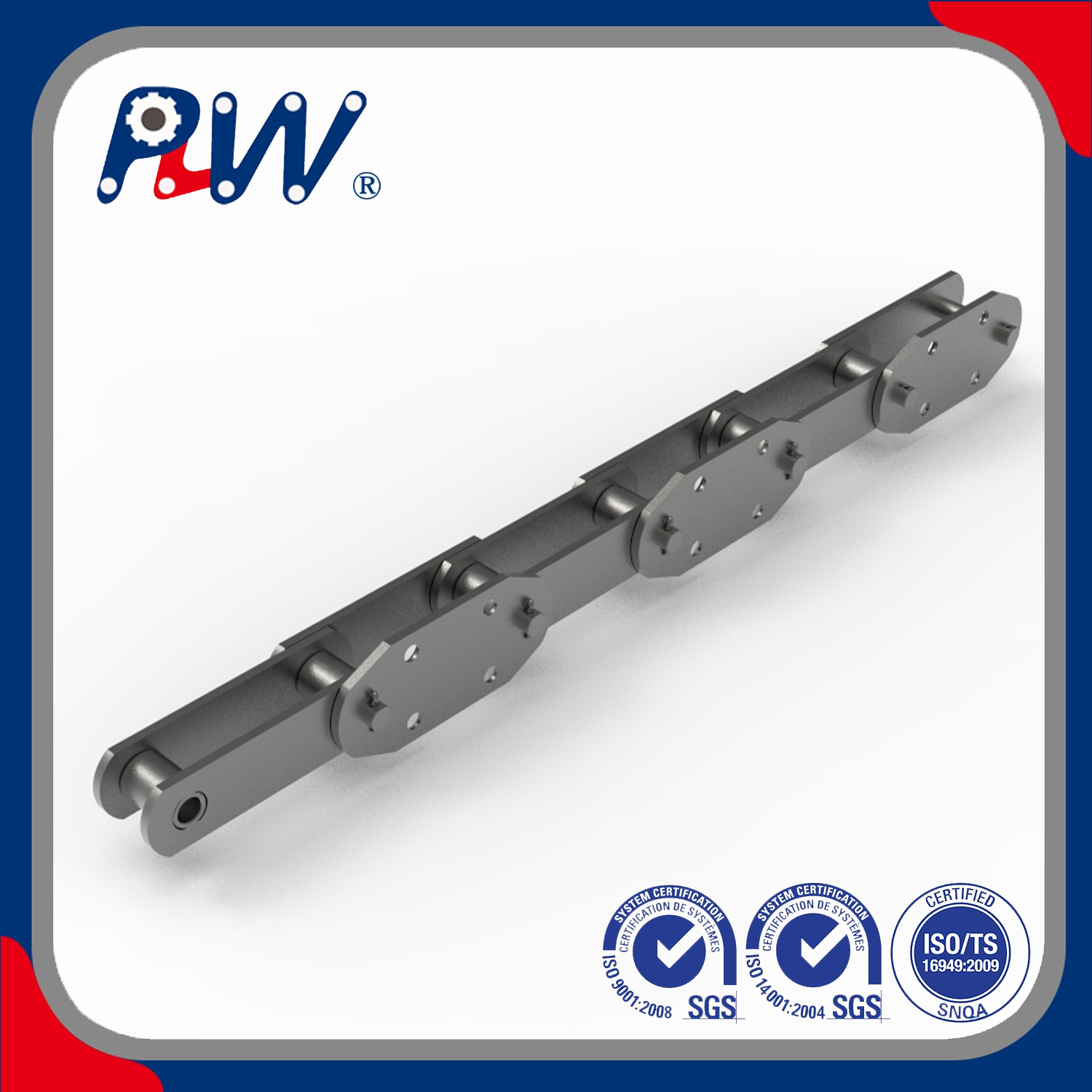In industrial applications, selecting the right type of chain is crucial for ensuring efficiency, durability, and operational safety. Among the most commonly used chains are roller chains and leaf chains, each serving distinct purposes. While they may appear similar at first glance, their design, functionality, and application set them apart. This guide explores the fundamental differences between leaf chains and roller chains, helping you make an informed decision for your industrial needs.

Understanding Leaf Chains and Roller Chains
What is a Roller Chain?
A roller chain is a highly efficient power transmission chain consisting of rollers, pins, bushings, and side plates. It is specifically designed to work with sprockets, enabling smooth motion with minimal friction. Roller chains are widely used in industrial machinery, automotive systems, conveyor belts, and motorcycles, where continuous motion and precise mechanical power transfer are essential.
What is a Leaf Chain?
A leaf chain is a high-strength lifting chain made up of link plates and pins, but without rollers. Unlike roller chains, leaf chains do not engage with sprockets; instead, they are primarily designed for lifting, counterbalancing, and tensioning applications. Leaf chains are commonly used in forklifts, cranes, and hoisting equipment, where they can handle heavy vertical loads with flexibility and stability.
Key Differences Between Leaf Chains and Roller Chains
1. Design and Structure
● Roller Chains: Built with rollers and bushings to facilitate smooth motion, reducing wear and tear while transmitting power efficiently.
● Leaf Chains: Made up of stacked plates connected by pins, focusing on strength rather than rotational movement.
2. Primary Function and Application
● Roller Chains: Used primarily for power transmission in engines, machinery, conveyor systems, and bicycles.
● Leaf Chains: Designed for lifting, counterbalancing, and load-bearing applications, such as in forklifts and hoists.
3. Load-Bearing Capacity
● Roller Chains: Handle moderate to heavy loads at high speeds with consistent power transfer.
● Leaf Chains: Capable of supporting extreme loads under static or slow-moving conditions, making them ideal for lifting heavy weights.
4. Friction and Wear
● Roller Chains: Experience less friction due to rollers engaging with sprockets, leading to longer lifespan when properly maintained.
● Leaf Chains: Depend on pins and plates sliding against each other, which may lead to higher wear over time.
5. Maintenance and Lubrication
● Roller Chains: Require regular lubrication to ensure smooth movement and prevent friction-related wear.
● Leaf Chains: Generally low-maintenance, as they do not require constant lubrication due to their simpler design.
Choosing the Right Chain for Your Application
1. Type of Application
● If your requirement involves mechanical power transmission, a roller chain is the best choice.
● If you need a chain for lifting, load-bearing, or counterbalancing, a leaf chain is the superior option.
2. Strength and Load Requirements
● Roller chains are ideal for high-speed, moderate-load applications.
● Leaf chains are built for extreme load-bearing tasks with high tensile strength.
3. Environmental Considerations
● Roller chains work best in clean, controlled environments.
● Leaf chains are rugged and durable, making them suitable for harsh industrial conditions.
Conclusion: Selecting the Best Chain for Your Needs
Both leaf chains and roller chains play crucial roles in industrial applications, but their design, load capacity, and functionality determine their suitability for different tasks. While roller chains are optimal for power transmission, leaf chains excel in lifting and hoisting operations.
Contact Us for High-Quality Chains!
Looking for durable roller chains or heavy-duty leaf chains? We provide premium industrial chains designed for lifting, power transmission, and material handling applications. Contact us today for expert guidance and find the best chain solution for your business needs!
English
Español
العربية
Français
Русский
Português
Deutsch
italiano
日本語
한국어
Nederlands
Tiếng Việt
ไทย
Polski
Türkçe
አማርኛ
ພາສາລາວ
ភាសាខ្មែរ
Bahasa Melayu
ဗမာစာ
தமிழ்
Filipino
Bahasa Indonesia
magyar
Română
Čeština
Монгол
қазақ
Српски
हिन्दी
فارسی
Kiswahili
Slovenčina
Slovenščina
Norsk
Svenska
українська
Ελληνικά
Suomi
Հայերեն
עברית
Latine
Dansk
اردو
Shqip
বাংলা
Hrvatski
Afrikaans
Gaeilge
Eesti keel
Māori
සිංහල
नेपाली
Oʻzbekcha
latviešu
অসমীয়া
Aymara
Azərbaycan dili
Bamanankan
Euskara
Беларуская мова
भोजपुरी









